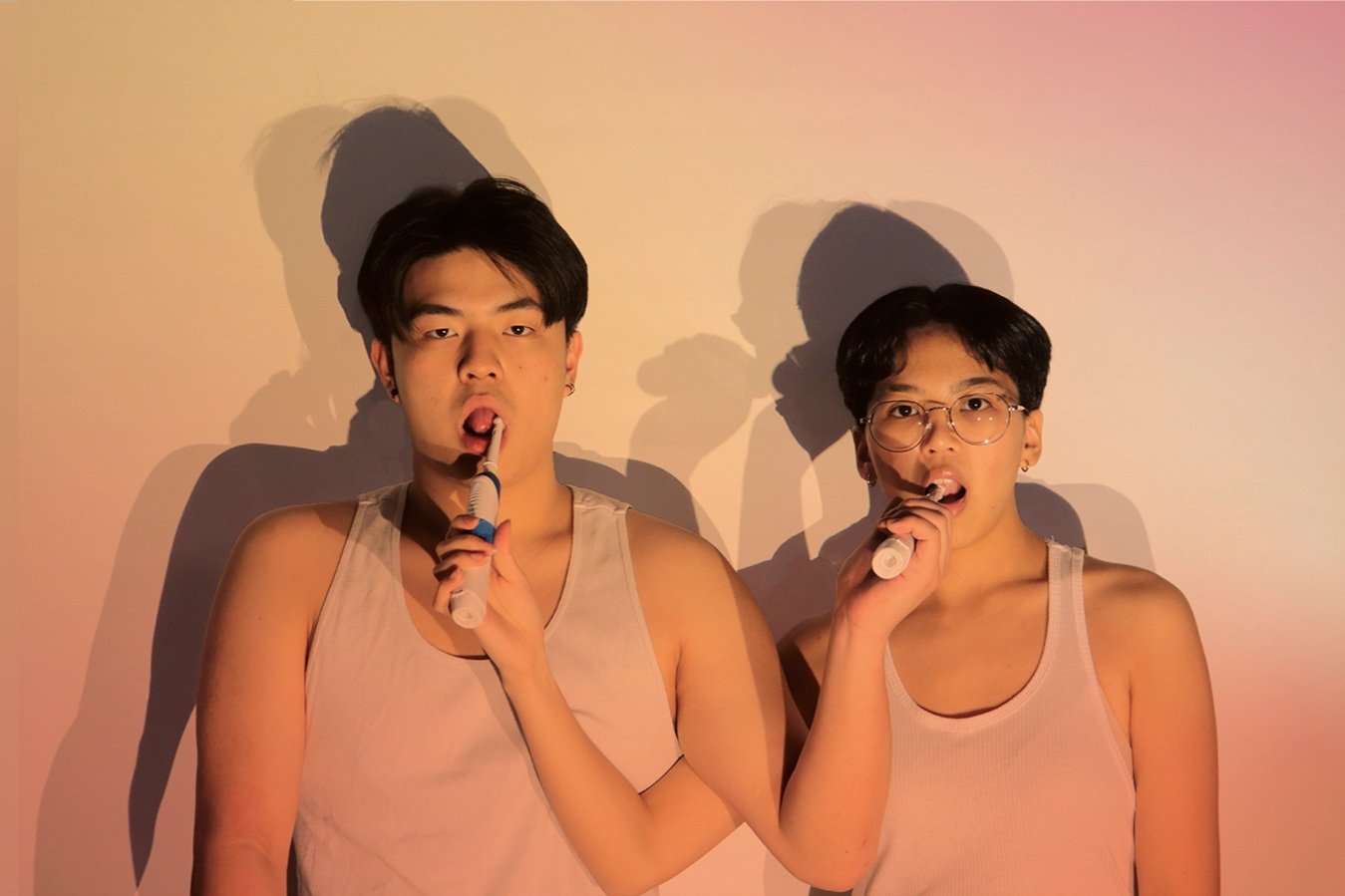Aalaapi ᐋᓛᐱ conjures the storytelling, slow rhythms, and vast silence of the Far North
Multimedia PuSh Festival show blends radio documentary, performance, and projected imagery to follow five young Inuit women
Photo by Anne-Marie Baribeau
The PuSh International Performing Arts Festival presents Aalaapi ᐋᓛᐱ from January 29 to February 2 at the Waterfront Theatre with select online presentations
SET IN AN Inuit village, Aalaapi ᐋᓛᐱ urges us to slow our inner rhythms and enjoy the richness of story and silence. Appearing in Vancouver as part of the PuSh International Performing Arts Festival, Aalaapi’s multimedia performance places us in the shoes of a foreigner visiting the North, urging us to engage with the complexities of Inuit storytelling and culture. A performance that dabbles in radio and live performance, the past and present, Aalaapi teaches us the art of listening with humility, a generous offering of Indigenous ways of being that can be carried forth into everyday life.
Multidisciplinary artists Laurence Dauphinais and Marie-Laurence Rancourt first created Aalaapi as a radio documentary that brought together a group of five young Inuit women to tell the story of their lives and communities as they traveled between the North and South to study. Later adapted to the stage, Aalaapi is a dance between performance and radio, stillness and engagement.
“It's a show that's really introspective and poetic,” says Laurence on the phone from Montreal in an interview with Stir. “It forces the audience to slow down their inner rhythms and adapt to the time that is the Northern time, a completely different relationship to time, a completely different relationship to silence as well. It’s a show about the act of listening, the art of listening, to the unknown, the unfamiliar.”
Silence is an ever-present element of the North, and Inuit communities have maintained a distinct and different relationship to silence from Canadian settler culture.
“Our two performers Nancy Saunders and Ulivia Uviluk often say when they visit their families, very often they can sit in silence with them and people don’t need to talk all the time, people don’t need to be verbally performing their intelligence or having to fill the emptiness with words,” Laurence says.
Laurence, who is non-Inuk, says that working with Inuit knowledge radically changed her relationship to silence and words. “We were asking ourselves tons of questions about how to not reproduce dynamics of domination, how to find a way to work differently together, collaborate differently together, find a way to be heard, to feel respected,” she says. “It was clear that I needed to have a lot of humility, and I think humility begins with the act of listening. Listening for real, without already thinking about the next thing you’re going to say. And I think that’s what humans really need, is to feel heard first, and then maybe we can think of the next step to healing or changing dynamics.”
The show delicately balances silence and sound, using audio from the documentary paired with Northern soundscapes. Visually, the performance is filtered through the windows of a Northern house, which the audience peers through to uncover the stories of the two Inuit women who live inside. The performance encourages us to actively engage in the world Aalaapi has created, while also asking for our patience.
Photo by Anne-Marie Baribeau
“I believe the multimedia aspect of the piece is what glues the sound documentary and the live performance together,” Laurence says. “The sound documentary gives us so much space for our imagination, the audience actively needs to visualize what is not shown to them. Often when something is shown to us, we make judgments right away, the image can create a lot of barriers. I feel like sound does the opposite, sound really gives space to recreation of ideas, of novelty, rather than repetition of cliche.”
“At the same time, the two performers on stage, as well as the video projection, serve as a simultaneous complement to the sound,” she adds. “They anchor the experience, they complexify and densify the audience’s experience. So it gives the audience a sense of the past, through the archival materials projected, as well as the present, through the sound documentary and the two performers. The archival images give us a different access to those communities throughout time, providing an incredible palette of diversity of who these communities are, and the complexity of them.”
Aalaapi aims to break stereotypes and defy the sensationalism that surrounds Indigenous people, revealing the complexity of identity and story that is so often denied public view. Aalaapi dives deep into the lives of modern Inuit women, exploring their desires and challenges. The performance not only explores the past of their communities, but also poses the characters as the carriers of hope for the future- there is much to be learned from these women, whose stories are so often neglected.














